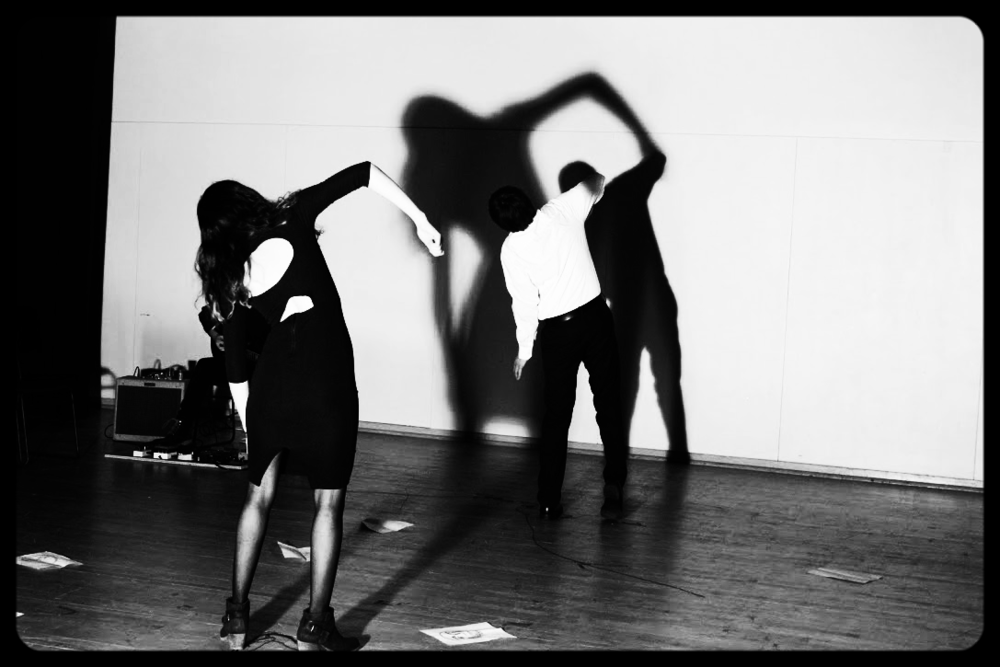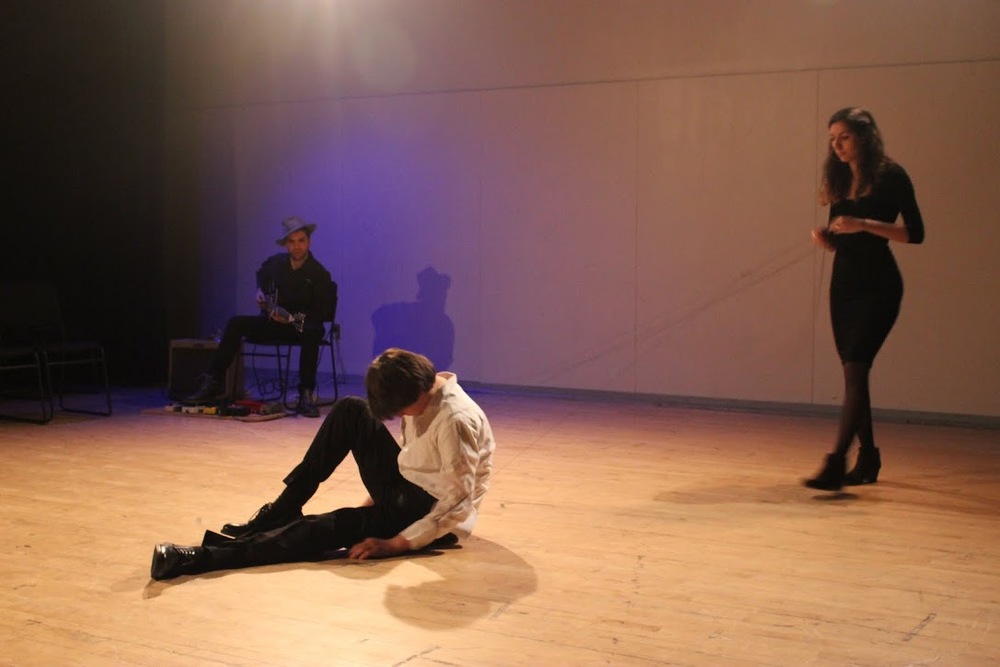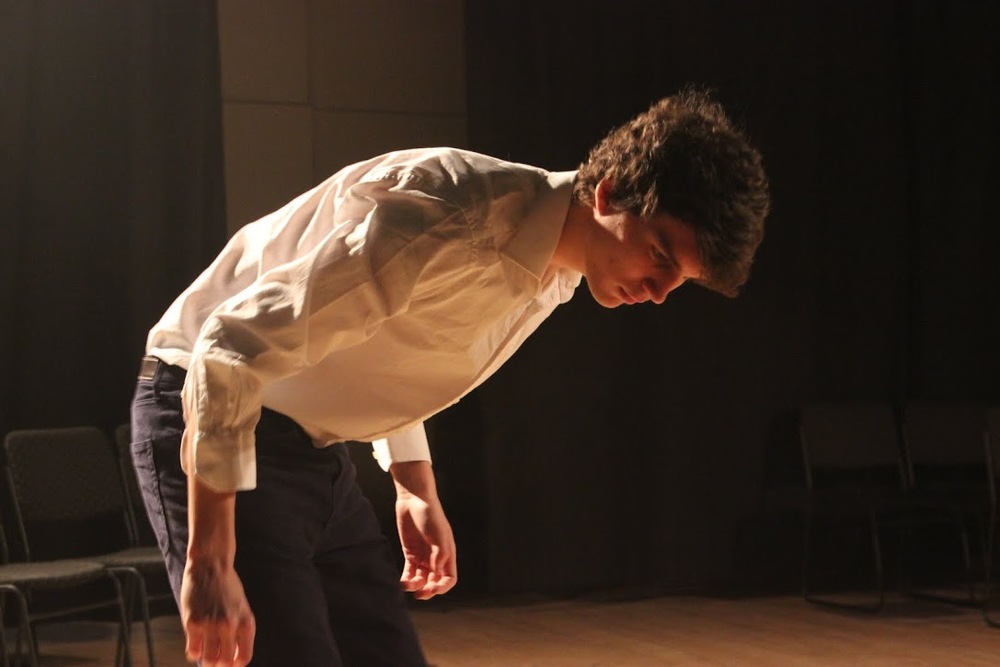
An Exploration of the Theatrical Form
By: Molly Burdick ’17
In no way was Dacha, directed by Aaron Ardisson ’16, a traditional “play.” Unlike a traditional single-text show, Dacha was an exploration of three works by Anton Chekhov: On the Harmful Effects of Tobacco, The Bear, and The Tragedian in Spite of Himself. These three selections were interwoven gracefully, allowing the final product a sense of cohesive plotline despite plot not being the piece’s focus. Visual and aural aspects of the show brought classic Chekhovian elements into new light. For example, the first segment, On the Harmful Effects of Tobacco, used a layered recording of Jacques Phelps ’18 reading Chekhov’s words to intensify Chekhov’s use of repetition. While the recording played, Phelps and Mariam Vahradyan ’18 created a distorted shadow puppet show on the wall that took the subtext of the scene and turned it into the supertext—the idea of a wife controlling her husband took on physical form.

This interesting text work was continued in the third segment of the workshop, which dealt with The Tragedian. Giorgos Petkakis ’18 was alone on stage, save for a brief surprise appearance by director Aaron Ardisson ’16, who appeared at the top of the scene to cover the studio with trash and knick-knacks. Petkakis then had to pick up the mess, slaving away in almost total silence. Hardly any of Chekhov’s original language was spoken. During the rehearsal process, Vahradyan recounts, “We were encouraged to keep our lines to a minimum and not speak until we felt absolutely compelled to.” This economical use of language was evident even in The Bear, which was the only segment to include dialogue between all three performers.
Underscoring the entire show was improvised music performed by Gabriel Cohn ’16, who sat onstage, guitar in hand, with eyes glued to the actors. When asked about his process in creating the music, Cohn said, “My goal was to give voice to the sub-textual human conflict and emotion in the three plays more than it was to create a traditional ‘soundtrack,’ so shifting between ambient and active sounds according to what I saw was important. Also, reacting to physical movement to make moves bigger, as well as using sound to draw out tension before key moments were things I experimented with as well.” The actors played off what they heard as much as Cohn played off what he saw them doing. Vahradyan said of the actors’ relationship to the music, “Gabe was a key element to our show, as he enhanced the mood of the scenes and further added to the tension in the relationships between the characters.”

Together, the actors, director, and stage manager (Marion Cox ’16) devised a piece that challenged our current conception of how we define theater. Cohn said, “I came away from the process having been exposed to a completely different way in which to tell a story through theater.” Rather than creating a complete, polished work, Ardisson used the workshop as a place to experiment with a different type of process.
Ardisson told me later that “perfection is boring,” and therefore he never asked his actors to obtain it. They were allowed to continue exploring through the full run of the show; each audience experienced a different Dacha. Vahradyan explained that in order to keep things fresh and exciting, “spontaneity and improvisation are crucial onstage.” The process was highly collaborative; no one person generated all the ideas, and everyone was encouraged to be creative. In fact, Cohn described the experience as being “the most collaborative process I’ve worked on at Skidmore.”

This article originally appeared in print in the Spring 2015 Skidmore Theater Newsletter.
